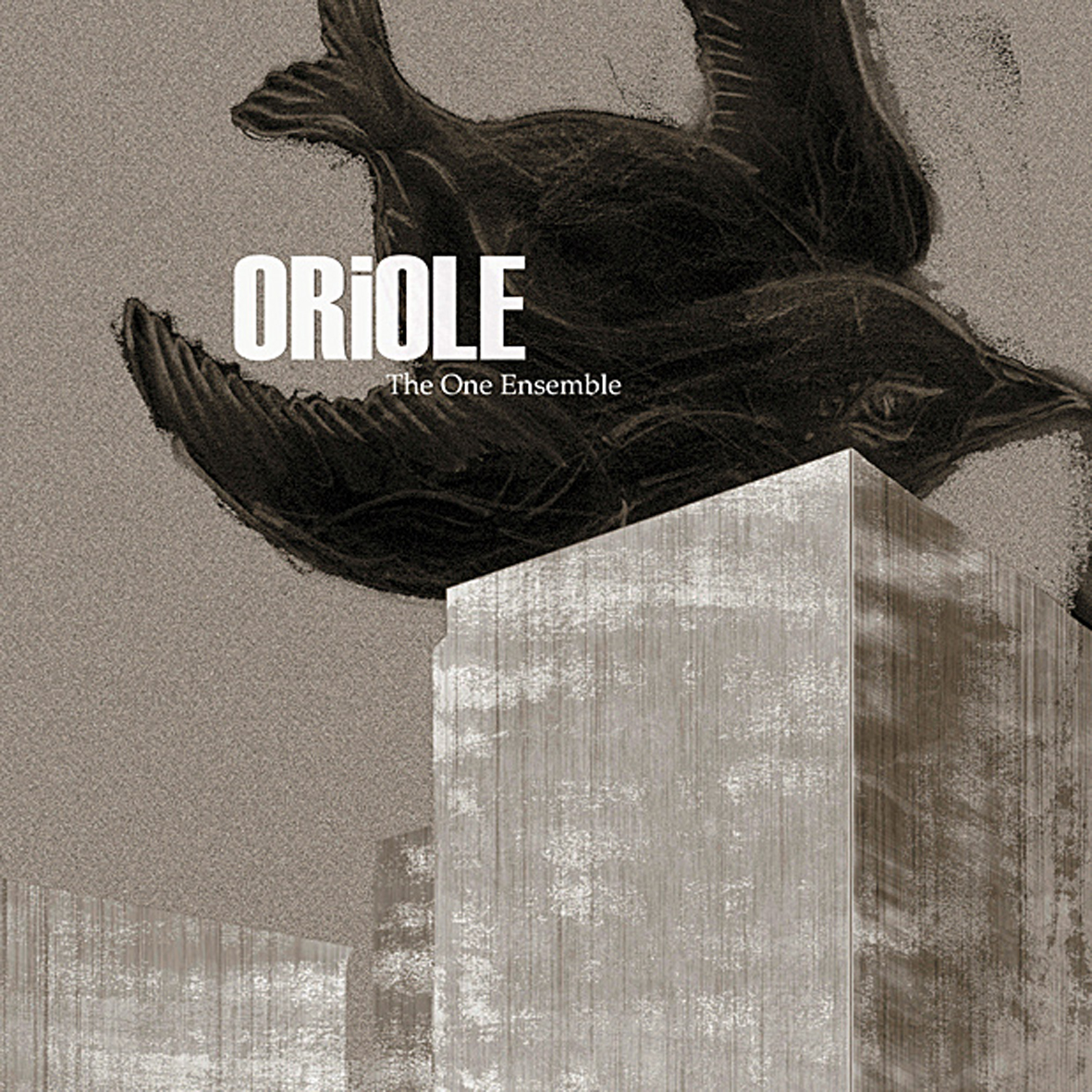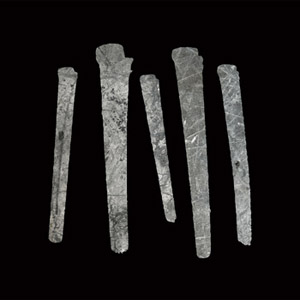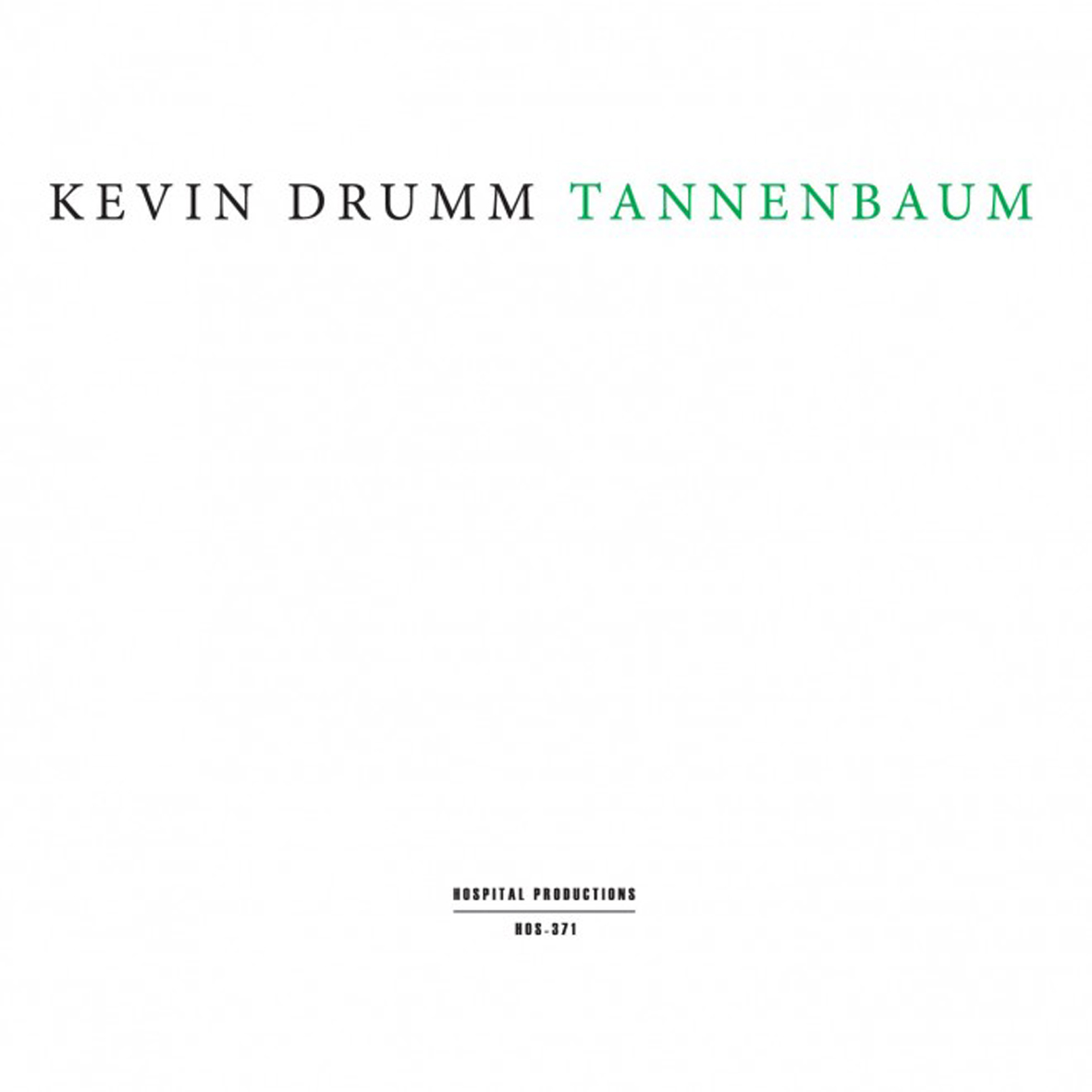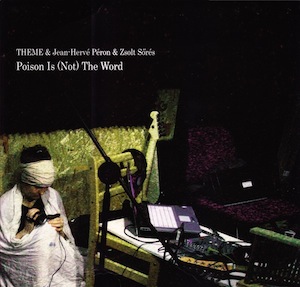- Administrator
- Albums and Singles
 While singing has frequently been part of Yoshi Wada’s other compositions, this is the first work of his to be released that dispenses with all other forms of instrumentation. Three male voices are all that is needed to create this intense and beautiful work captured during two performances in 1978. Combining the ultra modernism of the minimalist movement and ancient vocal traditions, Singing in Unison rivals any other modern vocal work I have heard thanks to its powerful mix of simple structures, complex harmonies and, above all, its emotional warmth.
While singing has frequently been part of Yoshi Wada’s other compositions, this is the first work of his to be released that dispenses with all other forms of instrumentation. Three male voices are all that is needed to create this intense and beautiful work captured during two performances in 1978. Combining the ultra modernism of the minimalist movement and ancient vocal traditions, Singing in Unison rivals any other modern vocal work I have heard thanks to its powerful mix of simple structures, complex harmonies and, above all, its emotional warmth.
 
In the 1960s, La Monte Young ditched his saxophone and began singing drones accompanied by his partner Marian Zazeela while Tony Conrad, John Cale and Angus MacLise created a heady wall of precise harmonization around them. The Theatre of Eternal Music would eventually collapse over disputes as to whether Young was a composer or these were group improvisations that belonged equally to all five of them. However, Young and Zazeela’s fascination with singing in an incredibly exact way continued and can be heard on albums like Dream House 78’17" (recorded with a new, Young-approved line up of the Theatre of Eternal Music) or backing Pandit Pran Nath on multiple recordings of this master of the Kirana Gharana style of Indian classical music. Young and Zazeela had invited Pran Nath to New York where he stayed, teaching interested musicians the demanding techniques he had developed throughout his practice of the craft.
One such student was Wada, who learned not only Pran Nath’s style and musical heritage but also Pran Nath’s use of dense harmonies that were possible using only the human voice (in a similar manner to how other composers were using instruments to achieve the same harmonic outcomes). In the liner notes, Wada describes his lessons with Pran Nath and his strict regime of practicing early every morning singing with a tambura. Mixed with memories from childhood of Buddhist monks chanting in prayer and his exposure to a group of women singing traditional Macedonian music, the seeds were sown for Singing in Unison. Wada envisaged a male alternative to the Macedonian women’s approach and combined it with the vocal training he had received from Pran Nath. Singing in Unison involves three male voices singing a wordless, timeless chant. It sounds like primal folk music and is far removed from the volume-intense bagpipe and installation works he would be better known for.
The group itself consisted of Wada, Richard Hayman (not the Boston Pops arranger!) and Imani Smith and it is hard to hear where the three voices differ as they merge into one another. A picture of a promotional postcard in the liner notes describes the work as "Improvisational singing in unison" but Wada’s own notes from 2012 suggest that the form was originally based on his own solo improvisations and then written down (there is a copy of a page from his handwritten score also included). The three voices largely follow the same undulating form, going up and down together. There are augmentations here and there along with deliberate shifts in pitch to bring out an array of microtonal intervals. It is these moments when Singing in Unison goes from being simply beautiful to being intensely spiritual, almost mystic. Yet, there is no spiritual agenda here, this is the power of music at what first to be its most basic level (the human voice) but tailored to hit our ears and our minds in all the sweet spots. Wada states his goal is communication and with Singing in Unison, he successfully manages to send a message of peace to the listener.
As with one of the previous Wada reissues on Em Records, the entire work is only available on vinyl with an extract from the complete recordings available on the CD edition. In the case of Singing in Unison, this means that the CD contains only one of the two recorded performances. I went for the vinyl as I wanted to get the whole lot but I may end up getting the CD too so I can listen to Singing in Unison without having to interrupt the music every 20 or so minutes. The performance included on the CD is a slightly better recording only because there is less background noise during the performances. However, both performances pack the same emotional punch as each other even if at times they stray a little from each other so perhaps there was more improvisation than I was giving the group credit for.
Improvisation or not, what matters most about Singing in Unison is that it pulls me in completely for its entirety. Wada’s music always takes me over but normally it is due to its relentlessness. With Singing in Unison, he leaves the shrill steamroller effect of bagpipes and big percussion aside to persuade the listener instead of conquering them.
 
Read More
- Administrator
- Albums and Singles
 Edward Ka-Spel's recent hot streak arguably takes a bit of a break with this release, but that is at least partially by design, given the Chemical Playschool series' role as a repository for indulgence, improvisation, experimentation, orphaned songs, and general weirdness.  The bulk of these lengthy pieces center around Ka-Spel's surreal, paranoid monologues and throbbing, synth-based space rock vamps, which can be quite compelling (and also disturbed-sounding).  The catch is that these lengthy not-quite-songs are not particularly well distilled, leaving the album's many high points embedded in quite a bit of meandering psychedelia.
Edward Ka-Spel's recent hot streak arguably takes a bit of a break with this release, but that is at least partially by design, given the Chemical Playschool series' role as a repository for indulgence, improvisation, experimentation, orphaned songs, and general weirdness.  The bulk of these lengthy pieces center around Ka-Spel's surreal, paranoid monologues and throbbing, synth-based space rock vamps, which can be quite compelling (and also disturbed-sounding).  The catch is that these lengthy not-quite-songs are not particularly well distilled, leaving the album's many high points embedded in quite a bit of meandering psychedelia.
"Immaculate Conception" opens the album in somewhat deceptive fashion, as it initially feels a lot like a catchy, well-crafted song.  Over a very minimal throbbing synth line, Ka-Spel sings a pleasantly lilting melody while strange sounds and backwards guitars and pianos swell around him.  That illusion only lasts for about four minutes though, at which point the piece becomes a very clear foreshadowing of what is to come.  The aesthetic can certainly be described as "space rock," but it is a very specific and unusual strain of it, in that most expected "rock" elements are nowhere to be found.  Instead, Ka-Spel tends to sing somewhat linear songs over subtly pulsing electronics until the bottom drops out and the structure is crushed in a black hole of abstraction, studio effects, and moody atmosphere.  The only difference between "Immaculate Conception" and the three major pieces that follow is that "Conception" is just nine minutes long and only fleetingly collapses before regaining its structure.
I suppose that probably makes it the album's most accessible song, but I have always preferred the Dots' darker, weirder side, which is where most of the album's remainder takes up residence.  My favorite piece is the (initially) warm and burbling "Sparks Fly/Museum," which eventually gets consumed by an escalating tide of electronic chaos.  After a very lengthy descent into The Silverman's rumbling, bleeping, and whooshing free-form spaciness, a new (and superior) song emerges.  The new song ("Museum") is much more dense and menacing, showcasing how truly compelling and blackly funny Ka-Spel's monologues can be ("I'm here, suckers!").
The similarly lengthy "The Opium Den" contains only fleeting traces of actual song, but offers an extremely beautiful instrumental passage that sounds like hammered dulcimer before it ultimately dissolves into some rather hallucinogenic drone with whispered and rasped vocals.  "Ranting and Raving," on the other hand, returns to the darkness of "Museum," as Ka-Spel's creepy, echo-heavy stream-of-conscious almost-poetry ("please keep an ear out for my screams") unspools over a heavily throbbing bed of buzzing industrial synth and clattering, panning tribal drums.  Then some sort of gibbering, chirping digitized menagerie erupts and my brain is left well and truly scrambled. After that, there is nothing left but the come-down.  Though uncharacteristically brief, "Immaculate Conclusion" brings the album to an appropriately eerie close, as the increasingly processed Ka-Spel endlessly chants "you all belong to me" over layers of buzzing and squelching radio waves and a fragilely melancholy melody until his voice fades out to leave only a crackling aftermath.
The whole album adds up to complicated experience that is pleasantly difficult to wrap my head around.  Taken on a song-by-song basis. Chemical Playschool 15 can seem quite exasperating and flawed, as nearly all of the songs feel like great ideas that have been stretched, bloated, and diluted into merely decent songs with occasional and ephemeral flashes of brilliance.  Taken as a complete album, however, it all seems perversely successful and cunningly assembled.  In fact, all the excess and indulgence and 20-minute songs seem to turn into assets in the right light, as the album could not be nearly as immersive if it were shorter or more aggressively edited...and total immersion is essential to this suite's magic.  I may not like every aspect of Chemical Playschool 15, but by the end of the album, I definitely felt like I had been on a long, surreal, and exhausting journey and emerged from the wilderness a little bit different, which is an experience that few other albums can offer.
 
 
 
Read More
- Administrator
- Albums and Singles
 Daniel Padden has always been a prickly, inscrutable, and unpredictable artist, equally capable of visionary brilliance and perplexing, inaccessible indulgence.  This latest effort is an especially perverse and puzzling one, as Padden takes his long-standing fascination with English and Eastern European folk music into more accessible, song-like, and vocal-centric territory.  It is an intermittently successful experiment, but The One Ensemble's greatest talents definitely lie elsewhere.
Daniel Padden has always been a prickly, inscrutable, and unpredictable artist, equally capable of visionary brilliance and perplexing, inaccessible indulgence.  This latest effort is an especially perverse and puzzling one, as Padden takes his long-standing fascination with English and Eastern European folk music into more accessible, song-like, and vocal-centric territory.  It is an intermittently successful experiment, but The One Ensemble's greatest talents definitely lie elsewhere.
There are two things that I absolutely love about The One Ensemble: their ability to cohere into a lumbering, raggedly visceral juggernaut and their talent for combining beauty with savage dissonance (a feat perhaps best exemplified on Wayward the Fourth's "Horsehead Waltz").  Unfortunately, most of Oriole either lacks both of those elements, or employs them in fleeting, schizophrenic, or less-than-optimum ways.
The opening "The Farthest West" comes closest to capturing the band at their best, as it veers from truly lovely viola melodies to bludgeoning tango to a squealing, snarling viola freak-out over the course of its 7-minute length.  There is even an evocative and enigmatic chant interlude in the middle ("these are the mountains that will fall from the skies of Morocco").  It comes extremely close to being a great song, as all of the individual parts are quite striking and complement each other beautifully, but the tango motif is flogged a little too aggressively with too little development for my liking.
After that promising beginning, however, Oriole becomes something of an odd and uneven grab-bag, as the remaining five songs are a mixture of traditional (or faux-traditional) sea shanties, covers, and reprises of earlier material.  The main issue is that vocals tend to become the primary focus of a song, largely overshadowing the more compelling instrumentation beneath.  That would not be problematic if the songs were particularly strong, but that brings up yet another issue: Padden's song choices are not solid enough to carry an album.  The cover of Moondog's "Pigmy Pig" is a prime example: while the Eastern-European-drinking-song melody of piece certainly hits Padden's historic comfort zone, the repetitive and absurdist quasi-nursery rhyme lyrics very nearly drive me insane ("Pigmy Pig, how big you are, big as Pigmy Seal").
Also, there are not one, but two sea shanties on the album, which is quite a lot given that there are only six songs in total.  The dirge-like "Chicken on a Raft" is a traditional piece in which a sailor laments his weariness and love troubles over breakfast, while "Verdant le Coq" is a shrilly raucous and lurching sing-along.  Both of them thankfully erupt into something more eventually, but I cannot get around the fact that they are actual sea shanties, which is a genre that does not resonate with me at all.  I understand that the emotions at a song's core can transcend the actual words and that Daniel was trying to tap into something timeless, but I simply could not identify with those sea-faring folk on a real emotional level ("chicken on a raft on a Monday morning, oh what a terrible sight to see").  I do not particularly like eggs though ("chicken on a raft" means "egg on toast"), so maybe that piece will someday grow on me.
The album is rounded out by a couple of interesting misfires.  "Burning Must" revisits the churning "Gypsy dance" theme of Live at VPRO's "Mustard Mustard," but also periodically sounds like a locked-groove of Dexy's Midnight Runners trying their hand at dissonant Dischord-style art rock. "Oriole," on the other hand, is all over the place.  Some parts are great, particularly the point near the beginning where the viola and cello are furiously sawing away over something that sounds like a marching band attempting to replicate a busy signal with maximum force.  It has an extremely unconventional structure though, which I had a hard time embracing.  A few themes seem to repeat, but the transitions between the major key accordion sections, the indecipherable sung passages, and the darker, more string-heavy parts seem a bit sudden, arbitrary,  and confounding.  It reminds me a bit of over-achieving technical metal or prog rock bands who cram lots of abrupt changes and disparate sections into their songs to pointedly highlight their virtuosity and unwillingness to limit themselves to pedestrian song structures.  I wish it did not.
On a more positive note, Oriole still sounds like The One Ensemble, which is no small feat.  While the increased emphasis on vocals and the more singular embrace of folk traditions have certainly shifted the focus a bit, Padden and his compatriots remain as unique, impassioned, skillful, and anachronistic as ever.  I am quite curious about this album's genesis, as it feels much more like a one-off ("The One Ensemble make a deeply eccentric folk album!") or an odds-and-ends collection than a new, significant artistic statement.  As an album, Oriole is just not focused or coherent enough to measure up to the rest of the Ensemble's recent work.  There are certainly hints of greatness to be found, but they feel like they may have been released before they had a chance to fully grow and take shape.
 
Read More
- Administrator
- Albums and Singles
A timely and welcome reissue of the first part of the trilogy of recordings by
Ferial Confine dating back to 1985.
Catalogue No. : Siren 021
Released by Siren Records, Tokyo
Release Date : 17 February 2013
Here sensitively remastered by Denis Blackham from the original master tapes at Skye Mastering and with a beautiful
facsimile mini LP style sleeve, made in Japan.
The Full Use Of Nothing was the first serious publication of music by
Andrew Chalk/Ferial Confine on cassette in the mid-eighties. Early experimentation in acoustic percussion and primitive multi-tracking techniques shaped the sound and spirit of these formative recordings, somehow very tentative but leading to an on-going fascination with subtle shifts in balance and nuances of sound within a limited palette, albeit in a wild and free series of performances here.
As the first part of the projected Siren re-issue trilogy ;
'The Full Use Of Nothing' (1985), 'Meiosis' (1985) and 'First, Second And Third Drop' (1986),
the primitive energy and somehow primeval expression of the first album is a vital key to the distinct changes and subsequent refinement that would follow afterwards and contains the pure essence of the project, from a different period almost 30 years past.
It is therefore fitting this being the first part of the trilogy.
The Full Use Of Nothing is in an edition of 500 copies with Japanese language obi and features the original reproduced artwork by Andrew Chalk for the album.
The CD was manufactured by in Japan. Layout by Magda Stepien, translations by Daisuke Suzuki.
Read More
- Administrator
- Albums and Singles
 Compiling their vinyl debut and follow-up EP, this compilation captures the Chicago rock supergroup (made up of some of the city’s best known noise artists) honing and perfecting their surprisingly restrained and tuneful, but appropriately grandiose work.
Compiling their vinyl debut and follow-up EP, this compilation captures the Chicago rock supergroup (made up of some of the city’s best known noise artists) honing and perfecting their surprisingly restrained and tuneful, but appropriately grandiose work.
Consisting of Mark Solotroff (Bloodyminded, Intrinsic Action) on vocals, Greg Ratajczak (Plague Bringer) on guitar, drummer Dylan Posa (Cheer-Accident, Flying Luttenbachers), bassist Kenny Rasmussen and percussionist Blake Edwards (Vertonen), there are a lot of recognizable people here to those versed in the harsh noise world, so my interest was piqued when I heard Anatomy of Habit was more of a post-punk death rock band.
Within the first few minutes of opener "After the Water" (the shortest track at about seven and a half minutes), I immediately felt some kinship with the short-lived Freek Records label, who also captured some more noise-oriented bands doing more guitar-based music, such as Bodychoke and Ramleh.Maybe not in a direct manner, since those artists leaned more into a distorted, occasionally psychedelic squall while AoH has a much cleaner, almost ascetically sparse approach to their epic length compositions.
For example "Overcome" sticks to a sparse echoing bass and quiet feedbacking guitar structure rather rigidly, with Solotroff's vocals and slight variations to keep things moving.Slowly but surely noisier guitar drifts in, building to an aggressive climax of slow, but monolithic guitar riffs, stabbing drums and raw, aggressive vocals.It is not a song to just casually listen to; it demands full attention, which is rewarded at the end.
Repetition is a key piece of these songs, most of which clock in at around a full length side of vinyl in duration."Overcome" and "The Decade Plan" open with elongated passages displaying simple, but effective variations, with Solotroff's vocals occasionally drifting more into mantra like repetitions.Never is it dull and tedious though, because the songs consistently build to dramatic crescendos that make them captivating.
While there is a variety of sounds and approaches, it is a dark record."The Decade Plan" opens as closed to upbeat as it gets, which is quickly contradicted by a dark, doom-laden closing.Even the more Joy Division tinged "Torch", with its majestic rhythmic dissonance is reformed into an early '80s metal riff-fest later on, bearing a passing resemblance to Metallica’s "For Whom The Bell Tolls" in the best possible way.
With the debut LP ("Overcome" and "Torch") coming out in 2011 and last year’s EP ("After the Water," "The Decade Plan") both being relatively recent, there is a noticeable difference that can be heard between the two, with the more recent work showing a bit more variation and nuance in comparison to the more bluntly aggressive earlier work.The material works together as a consistent whole though, and feels more like a full debut album rather than a collection of previously released material, managing to be both powerful, but also memorable and catchy.
samples:
 
Read More
- Administrator
- Albums and Singles
 For their second collaborative release (following Untitled 1-3), these two composers who work in very different, but musically complementary realms have created a single, 45 minute work that makes for the perfect blend of light and shadow, clear and haze, with the album artwork making for a perfect metaphor for the sound within.
For their second collaborative release (following Untitled 1-3), these two composers who work in very different, but musically complementary realms have created a single, 45 minute work that makes for the perfect blend of light and shadow, clear and haze, with the album artwork making for a perfect metaphor for the sound within.
The first collaboration between these two involved them reworking each other's archival materials and unfinished works at various stages of completion, but Aurora Liminalis is a completely fresh work made up of new materials.The two may work together brilliantly, but their backgrounds are diametrically opposite:Chartier is a self-taught artist who draws heavily from synthetic sources and DSP processing, while Basinski has a classically trained background and prefers to work with magnetic tape and other less than perfect analog equipment.However, the differences complement each other perfectly, pairing organic warmth and digital precision throughout.
At times a warm, rich analog tone is stretched out to infinity, with all the imperfections of the dated technology, only to then be paired with carefully modulated digital interference and squeaky static fragments.During other moments, clinically precise buzzing square waves are mixed with fuzzy, inconsistent bits of tape hiss.
One thing Basinski and Chartier do share is an ear for the subtle and an avoidance of overbearing sonic bombast, and that is clearly reflected here.From the waves of tone to delicate crystalline fragments of static, everything remains hushed and distant, but never so much that it becomes the aural equivalent of wallpaper.Instead it demands attention and focus.The changes are subtle, but extremely effective:a mystical drone off in the distance is too dramatic to ignore, and the occasionally percussive pop or click makes for a forceful change, without being intrusive or overly disruptive.
The constant flow and shift is like the passage of light, at times bringing in a glorious, glowing warmth,while other times casting shadows and creating ghostly apparitions that may or may not be present.The result is a brilliant collaboration that comes across as unique entries in both artists' discographies, not sounding completely like either but bearing both of their marks perfectly.
samples:
 
Read More
- Administrator
- Albums and Singles
Find Yourself. Impatience. Death Blues. Acceptance. Impermanence. Iron String. The six songs that comprise Jon Mueller's Death Blues are each their own doorway to both a bold new musical statement from the renowned drummer/percussionist and an unprecedented journey into a conscious contemplation of death -- and the life that surrounds it. Released in tandem with a multi-part manifesto, Death Blues transcends its own existence as 34-minute, earth-cracking rock album. Much like Mueller, whose landmark solo work stands alongside his role in notable bands Volcano Choir (and previously, Collections of Colonies of Bees), Death Blues embodies the acknowledgement that there's more to experiencing music than simply just listening.
Conceived and largely executed in its recorded form by Mueller himself -- adding hammered acoustic guitar and bold vocal patterning to his ever-evolving mastery of percussion -- Death Blues is audibly (and intensely) personal. However, the very act of recording was the first step in a discourse that Mueller began over a year ago, forming a band of brilliant performers from his Milwaukee, WI hometown that would go on to perform Death Blues at Hopscotch Music Festival in Raleigh, NC and at two sold-out Death Blues events in Milwaukee, where a labyrinth led the audience into a multi-sensory and participatory experience culminating in a climactic performance of the album. It was as close as one could get to being next to Mueller at that moment of discovery: of the inevitability of death as the impetus to become more present in each moment and of the necessity of building his own path to sharing that idea.
Death Blues is being collaboratively released by Taiga (vinyl) and Hometapes (digital).

Read More
- Administrator
- Albums and Singles
This is the final album. The End, delivered in three parts, is achingly beautiful, and solidifies the territory explored in the band's previous efforts, including the stunning collaboration with Nadja, entitled Christ Send Light (20 Buck Spin), to convey an emotional journey through complex chord structures that render equal parts dissonance and melody. Born from the mind of Campbell Kneale (Birchville Cat Motel, Our Love Will Destroy The World) and partner James Kirk, The End is a stunning juxtaposition of darkness and radiance that triggers a visceral reaction in the listener. Those familiar with previous works from this outfit, such as The Witch Must Be Killed (Conspiracy Records), Verdun (Riot Season), and the multiple releases on 20 Buck Spin, will be elated by this eloquent yet blistering final chapter in one of the best bands to grace the genre. This hand numbered edition of 500 is housed in a custom, oversized, 7" square envelope.
EDITION: 500, hand-numbered, eight pieces to assemble, archived in custom oversized 7" square envelope
RELEASE DATE: FEBRUARY 19, 2013
More information here.

Read More
- Administrator
- Albums and Singles
4 Black Suns & a Sinister Rainbow is the all new double album from legend Matthew Bower (Skullflower/Pure/Total) and his Voltigeurs cohort Samantha Davies. Wrenching the swirl of extreme drone alongside buried melodic texture and harsh blackened noise comes a gnarled, cohesive work which serves as evidence that even the most prolific artists can find boundaries to break, and envelopes to push. The nuance in this double album is infinite, with each listen rendering a new discovery. For those with the deep-seeded desire to challenge the listening impulse, and continue what is nearly the fourth decade of the musical progression of a master, you will undoubtedly be entranced by this lush mosaic of sonic density.
EDITION: 500, 2XCD, hand-numbered
RELEASE DATE: FEBRUARY 19, 2013
More information here.

Read More
- Administrator
- Albums and Singles
 This is an album of such glorious and near-comic excess that it could only have been released by Hospital Productions, as it clocks in at a staggering 2 1/2 hours of brooding dark ambiance.  In fact, it feels like a perverse negative image of the perfectly distilled brutality of last year's Relief, drowsily stretching out endlessly in drone-mode without a hint of violence to be found.  A few of these seven pieces are (of course) quite good for what they are, but this is not an album that showcases Drumm's power, vision, and distinctiveness particularly well at all.
This is an album of such glorious and near-comic excess that it could only have been released by Hospital Productions, as it clocks in at a staggering 2 1/2 hours of brooding dark ambiance.  In fact, it feels like a perverse negative image of the perfectly distilled brutality of last year's Relief, drowsily stretching out endlessly in drone-mode without a hint of violence to be found.  A few of these seven pieces are (of course) quite good for what they are, but this is not an album that showcases Drumm's power, vision, and distinctiveness particularly well at all.
Drumm is not exactly a stranger to ambient drone music, but his first foray into that realm (2008's Imperial Distortion) was quite a polarizing event for his fans (in fact, Kevin seemed quite conflicted about it himself in some interviews).  That effort gradually (and rightfully) came to be regarded as one of the highlights of Drumm's discography, however, as did its similarly excellent follow-up Imperial Horizon.  Tannenbaum is a continuation of that thread in some ways (it is ambient rather than harsh noise, after all), but it is perplexingly divergent as well.
It definitely shares some common ground with some of Imperial Distortion's darker pieces, but the complete album is an altogether more minimal, cold, and alienating affair, often stretching one chord or idea to 10 minutes or more with little variation or development.  "Grace," for example, is little more than a fairly static insectoid buzz.  While that arguably works somehow, the album's opening hour-long drone slog "Night Side" most certainly does not.  Nor do several other pieces, particularly "Taurean," which sounds like Kevin fell asleep face-down on a synthesizer for half an hour.
I am not at all hostile or dismissive towards long-form drone ultra-minimalism, as several people can do it quite beautifully (Eliane Radigue or Machinefabriek, for example).  Unfortunately, most artists are not quite up to that formidable challenge and I am sad to say that Drumm is one of them.  He does not crash-and-burn horribly or anything, but his pieces in that vein feel faceless, overlong, and unsatisfying–there is nothing at all about them that stands out at particularly Drumm-esque.  When I pick up a Kevin Drumm album, I do not want to hear something that a dozen or more other artists could have recorded.  Also, there are a number of confounding compositional issues, such as the fact that the warm thrum of "Gradual Extinction" unfolds for 8 minutes with no real evolution, then seemingly fades out completely before the more vibrant two-minute coda appears.
Fortunately, Kevin fares significantly better with album's darker, heavier moments.  My favorite piece is the 20-minute "Winter Ice."  While it is just as minimal and static as some of the album's more exasperating moments, it is far more compelling due to its gently swaying and blurry dissonance.  The heavier, rumbling "Dimming the Gas Lights" also stands out, as it is certainly the most visceral stretch of Tannenbaum.  It reminds me of Lustmord or some of Thomas Köner's dark ambient work, but it packs a bit more snarl, often sounding like inhuman howls and moans from deep space during the controlled chaos of its crescendo.
On one level, I am pleased that Kevin did not cynically or lazily repeat the same formula that made the two Imperial albums so great, but it is hard to see this album as anything other than a serious misfire or an uneven grab-bag that could have greatly benefited from some added focus and editing.  I honestly do not think Tannenbaum should have been released in this state, particularly given the high standards that Drumm has maintained throughout his career.  There is certainly a good 40-18 minute album buried amidst the stupefying amount of filler, but even that is not so good that it eclipses my utter bewilderment at some of the decisions that Kevin made.  In particular, I cannot stop wondering why "Night Side" needed to last an entire hour, as so infuriatingly little happens (I am certain it could have said just as much in 10 or 15 minutes).  I had such high hopes too.  Though it pains me to say it, Tannenbaum is truly an album for completists and obsessive fans only–Kevin Drumm is capable of far better and more distinctive work than this.
 
 
Read More
- Administrator
- Albums and Singles
 For their fourth album, Theme’s Richard Johnson and Stuart Carter have picked up Faust’s Jean-Hervé Peron and Budapest musician Zsolt Sörés to pad out their already exciting sounds. The three barely restrained improvisations that make up this LP show a group that knows how to cook in the studio. At times tense, at others serene, Theme manage to cover a huge amount of ground with a fairly limited palette of sounds.
For their fourth album, Theme’s Richard Johnson and Stuart Carter have picked up Faust’s Jean-Hervé Peron and Budapest musician Zsolt Sörés to pad out their already exciting sounds. The three barely restrained improvisations that make up this LP show a group that knows how to cook in the studio. At times tense, at others serene, Theme manage to cover a huge amount of ground with a fairly limited palette of sounds.
Side A solely consists of the title track, a long and exciting workout from the group. For this piece, the group consists of Johnson, Carter, Sörés and Zsolt Varga who play with the sort of loose playfulness that brings this "difficult" music in from the cold and into my living room like an odd but thoroughly entertaining guest. Gurgling electronics and almost unpleasant violin come together to make a rich, intoxicating mixture which lies somewhere between the fun side of free improv and the messy side of ambient electronic music. The vocals give the piece a more earnest feel as the phrase "Poison is the word" intensely chanted along with some nihilistic imagery like "Death is always too late." This could put a bit of a downer on the music but the whole thing has a power to it which nearly lifts the stereo off its perch.
Peron makes his appearance on the two pieces on side B, "Baszd meg az apád!" and "Puszta Psycho." The former begins roughly in the same vein as the title track but quickly heads off in a different direction as the dense, noisy improvisations begin to break up and space out. As a saxophone spurts out at its higher registers, Peron’s babbling voice suddenly emerges from the background, sounding otherworldly. "Puszta Psycho" comes right back down to earth with a blanket of gorgeous, shimmering dulcimer (or something similar). Recorded in Budapest, it is easy to imagine ghosts from the city’s Ottoman past inhabiting the instruments. It is a superb piece and I wish it went on for an hour.
Initial copies of the LP come with a bonus CD-R, No Emotions Catered For, which features two pieces from an incoming full length album by Theme. For these two pieces, Olga Drenda and Lukasz Kozak join the core of Johnson and Carter. There is a different vibe to these pieces compared to those on Poison Is (Not) the Word, this is more melodic and, dare I say it, musical than the main album. "Another Context Revealed" sounds like The Angels of Light or a softer version of Swans, Michael Gira’s vocals would fit like a glove over the gently strummed acoustic guitar and vibraphone. The beginning of "Dream Your Dreams" has more of a folky feel to it, thought with a creepy spoken vocal over the sweet fingerpicked guitars. It then dissolves into a cosmic drift that sounds closer to Coil’s Musick to Play in the Dark than anything else on earth before shifting in style yet again into a nightmarish locked groove.
 
Read More


